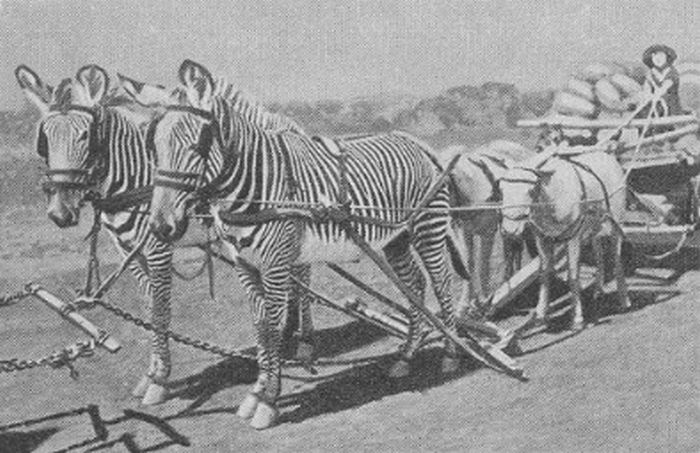 "QUANTUM SHOT" #694 "QUANTUM SHOT" #694
Link - article by Simon Rose and Avi Abrams
Some Odd, Forgotten and Bizarre Instruments from Around the World
Also Read Part 1
Most of us are familiar with pianos, guitars, drums, the wind and percussion instruments that make up many orchestras, plus many others. However, considering the multitude of different cultures that exist on our planet, its not surprising that mankind has also managed to come up with some pretty unusual musical instruments over the course of history. Here’s a look at some of the little known, odd, forgotten and at times bizarre looking instruments from around the world.

(steampunk styled guitar, by Lirio Salvador of the Philippines, more info)
This is the Pikasso, and it certainly looks like something the renowned surrealist artist would have devised. The Pikasso took two years to build, has four necks and 42 strings in total and you probably need more than two hands to play it:

(image credit: Manfred Schweda, Thisfabtrek.com)

(left: Pikasso Guitar; right image: unknown fantasy-style, via)
The zither, an instrument with strings stretched over a resonating wooden box, is familiar to some people as a result of its use in the 1949 movie The Third Man (listen here), but the instrument has been largely forgotten since that time.

(right: bowed zither, images via)
The Erhu from China is similar to a Chinese violin, with a base that is more oblong in shape. The word Erhu can be roughly translated into English as a ‘southern fiddle’. The small sound box at the bottom of the instrument is covered with... python skin:

(images via)
The Harp Guitar, while not being that well known, has in fact been around for at least two hundred years. It’s basically an acoustic guitar with an additional neck containing strings like a harp:

(the Wingert guitar, the Knutsen guitars and the Gibson harp guitar - images via 1, 2)
The Javanese Bonang has a wooden frame on which brass gongs are strung together. The brass heads are struck with padded sticks to create the desired sound and tone:

(images via, Frank W. Baker)
The alphorn, alpenhorn or alpine horn is mostly associated with Switzerland and the Alps, but similar wooden horns have been used in most of Europe’s mountainous regions over the centuries:

(image via)
This variety of trumpet called the wakrapuku is made from metal or cattle horn and is a very old instrument, dating back to pre-Columbian times in the Andes:

(images via 1, 2)
The clavichord, which could be described as a tabletop piano, was invented in the early fourteenth century and was very popular from the 16th century to the 18th century, when the piano first appeared. The clavichord was almost forgotten by 1850, but enjoyed a revival among enthusiasts at the beginning of the twentieth century:

(image via)
The distinctive humming of the didgeridoo from Australia is so closely associated with the land down under. The instrument is made from eucalyptus wood that’s hollowed out by termites and dates back over 1500 years:

(images via 1, 2)
Uillean Pipes and are type of bagpipes, used in traditional Irish music. The pipes are not blown into like the Scottish version, but instead the right elbow operates bellows, which pumps up a bag at your left elbow. This then produces the air for the instrument’s seven pipes:

(image via)
The Kaval is a type of flute used at various times by musicians in Armenia, Azerbaijan, Bulgaria, Macedonia, parts of Northern Greece, Romania, southern Serbia and Turkey:

(image via)
The bombard is similar to an oboe and is used in Breton music in Northern France. The bombard is apparently very loud and requires so much breath to play, that the player needs a rest after as little as ten seconds:

(images via 1, 2)
The ocarina is a very ancient flute-like instrument, dating back at least 12,000 years. Instruments of this type were known in ancient China, but the Spanish first introduced the ocarina into Europe after their conquests in Central and South America in the sixteenth century. It became known as a toy instrument for children, only capable of playing a few notes, until the modern version of the ocarina was developed in Italy in the mid-nineteenth century:

(images via 1, 2)
The three-string Shamisen from Japan is a little like a banjo, but with a smaller base and slimmer neck. It developed from the smaller Sanshin, the body of which is covered in python skin, which originates from Okinawa and the Ryukyu Islands. The shamisen is used in Japanese folk music and is popular with street performers:

(images via 1, 2)
So that’s our second look at some of the world’s more unusual musical instruments (read the first one here). Be sure to join us here at Dark Roasted Blend for Part Three.
Bonus: Brazilian radio station KISS FM invented a cassette-tape musician, who can play standard instruments to their hardest rock potential:

(image via)
Bugs are falling in love by sharing a DUET:

(art by Balazc Papay, CG Society, click to enlarge)
Meanwhile in Soviet Russia, it was all about how you listen to the instrument, too:

(original unknown)
CONTINUE TO "UNUSUAL MUSICAL INSTRUMENTS, PART 1"! ->
CHECK OUT THE REST OF OUR "UNUSUAL MUSIC" CATEGORY ->
Simon Rose is the author of science fiction and fantasy novels for children, including The Alchemist's Portrait, The Sorcerer's Letterbox, The Clone Conspiracy, The Emerald Curse, The Heretic's Tomb and The Doomsday Mask.

|

















































